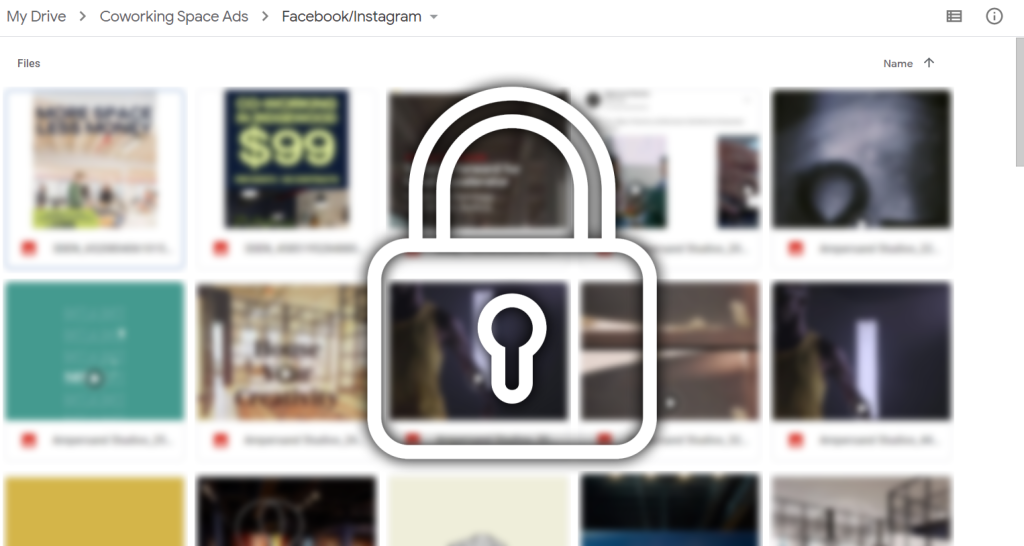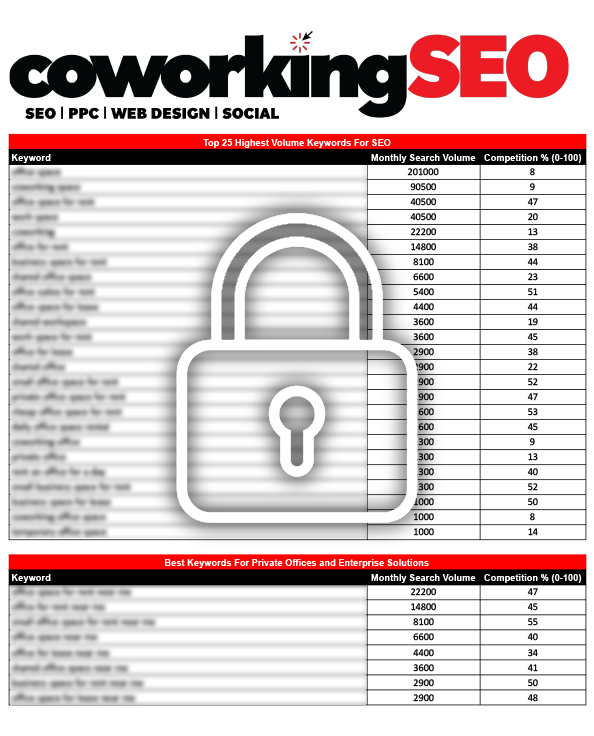We see many aspiring coworking operators and owners looking to launch their businesses, without having a clear understanding of the business model and how they will reach and maintain profitability.
A business plan is the best tool to help you map out your strategy for opening a coworking area and determine how you will make money.
A well-crafted plan will guide your decisions and give you the confidence to succeed. Plans can change at any time, but a solid starting point is essential to success.
This guide will explain what a coworking plan is, how you can create one that covers your entire business, and why it’s necessary. You’ll know everything you need by the end of this guide to create a successful business plan.

What Does a Coworking Space Business Plan Look Like?
A coworking business is a document that outlines how to start your coworking area and build a profitable and sustainable business. A business plan is a must if you’re applying for funding or a loan.
A business plan can be useful even if you’re not seeking funding. It will help you to organize your thoughts and ensure that you have a viable company before you open your doors or secure your location.
The Benefits of a Coworking Space Business Plan
A business plan will increase your chances of success. A business plan is necessary before you open your coworking space.
- Receive funding or a loan
- Guide for short-term as well as long-term strategies
- Help you make important business decisions
Another way to look at it. Imagine Darius wants to open a coworking area. He rents a property in his locality and begins to build out the space. He uses the information to help him decide what he will offer and how much he will charge. A year later, he opens his doors and… crickets.
Darius did not have a plan for his business.
- He is targeting
- If this location is the right one for his market
- The products that he offers are appealing to the target audience
- How will he acquire his first members?
- If his cost is enough to make him profitable monthly, quarterly or annually
You may think that a business strategy is not necessary for small businesses or rural areas. However, as you’ve seen, it’s very easy to make bad decisions and get off course without a plan.
A coworking business plan is not only necessary when you are starting your own business. If you want to expand or grow your coworking space you’ll need to create a business plan. Your business needs might have changed since you opened the space.

What Components Make up a Coworking Space Business Plan?
Let’s look at what makes up the best coworking plans now that you know the importance of a solid business plan.
The components of a business plan are pretty standard regardless of industry. The components of a typical business plan are:
- Executive Summary: summary document in its entirety
- Company Description: description including the mission and objectives of your company
- Market Analysis: write-up of the local market and broader
- Competitive analysis: Deep dive into your competitors both locally and globally
- Organization and Management Description: Outline your team’s structure and how it will work together
- Description of the Products and Services you are selling: Description
- Marketing Strategy and Sales Strategy: how you plan to market and acquire customers
- Financial projections: a breakdown of your finances and a path to profitability
- Fundraising strategy/sources: how to fund your business
Each section should be between 1-3 pages in length (remember that more is not always better). Write your plan with clarity, completeness, and conciseness in mind. This article by Harvard Business Review provides a great guide for creating a general plan of business that can be used in many different industries. Take a look below at each section and see how it relates to coworking.
How Do You Write a Coworking Space Business Plan?
We’ll explain how each part of a business strategy applies to your coworking area.
1. Executive Summary
The executive summary summarizes the entire business plan on a single page. The executive summary should include who you are, what business you will create, how you plan to make money, and other aspects of your overall plan.
Concentrate on creating sections that are impactful across the board and then return to your executive summaries at the end. It is easier to write the executive summary at last, much like you would an introduction paragraph for an essay.
2. Company Name
Consider your company description to be the “About” section of your business plan. You’ll be describing you:
Mission Statement
Why do you want to start a coworking space in the first place? What do you want your coworking space to be able to achieve for the community as a whole? Your purpose for creating this space should be woven into your mission statement.
“Bo Peng is the Founder of Mango Space. His mission is to provide professionals with a place where they can focus on work while enjoying a comfortable workspace. It is this that guides him in making all of his major business decisions.”
History
If you are a new coworking space, your resume may include the history of the company and any skills that you have acquired. This will allow you to be successful as an owner and operator.
The history should include all milestones and achievements.
This section is a great place to gain the confidence you need to succeed in your business.
Objectives
Your mission statement will tell you Why You do What You Do, while your objectives will show you What You Hope to Achieve on a tactical level.
Take Jason, for example. If Jason’s mission is to provide artists with the tools to succeed, his goal would be to establish the top coworking space in the United States for musicians.
Keep your company’s description concise and clear. Don’t get lost in the details. Mission statements can be as short as two or three sentences, while history and objectives are easily addressed with bullet points or short paragraphs.
3. Market Analysis
The market analysis you conduct will include key facts about the coworking industry, both locally and globally.
You should do this step whether or not you have a coworking business plan. Here are some tips on how to complete a thorough analysis of the coworking industry:
- To get the latest information on the industry, look for reports from reputable sources, such as Deskmag’s annual Global Coworking Survey.
- You can find communities on the web, where people discuss coworking trends, challenges, and opportunities.
- To inform your findings, talk to operators to gauge their perspective and experience.
You should discuss the current market trends, the growth in the market, and the target audience you are targeting. Also, explain how you arrived at that conclusion.
You may have found, through your analysis of the market, that 20% of coworking spaces are occupied by remote workers. This number is expected to grow. You want to market your coworking space toward remote workers in the area.
One more tip for this section and your entire business plan – back up all facts with credible sources. Be prepared to provide credible sources if you ever have a question about where a particular number came from.
4. Competitive Analysis
Your business plan’s competitive analysis will break down your competitors. Focus on flexible workspaces and coworking spaces in the area of your business’s location, as well as larger competitors who may pose a threat.
Imagine Linda opens a coworking in Everett, her hometown. In her analysis of competitors, Linda will want to include all the coworking spaces that exist in Vancouver, and how she plans to differentiate herself. She’ll also mention large coworking brands that are expected to relocate to Vancouver in the future.
The competitive analysis you conduct is ultimately all about figuring out exactly how you can win against your competitors.
Many coworking space operators and owners don’t want to be referred to as “competitors”. In the coworking industry, collaboration is possible (and often occurs). Understanding the other coworking spaces in your area, however, is crucial to the viability and success of your business.
5. Description of Management and Organization
This section allows you to introduce the people who will be working for you. You can describe their credentials and how they will make you successful.
Many people who are just getting started in coworking may only have a small team. It’s important to mention how you plan to ensure your coworking space is successful in the absence of a larger group.
It’s a great opportunity to talk about the coworking software that you plan to use to streamline your operations and manage your workspace. Flex Engine, coworking software reduces overhead and takes care of most of the daily operations.
You could reduce your team size by integrating with an automated system such as Kisi. If you are a small business, this section is a good place to go into more detail.
6. You Can Break Down Your Products and Services Into Different Categories.
You’ll need to include a description of the services and products you will be providing in your coworking space. This may look something like:
- You’ll need to decide what you want to offer as your core product ( drop-ins, private offices, virtual offices, hotdesking ).
- Other services ( childcare, marketplace, etc.
- You’ll provide amenities in your coworking area
- Rent out your space for events or after-hours rentals to keep your coworking space active.
New operators can find it difficult to determine the best mix of products that will drive profitability for their space. We recommend starting from an experimentation point, with a product or service, and then iterating from there.
If you are looking for ideas on how to price and offer memberships, we also have a guide that will help you. This will help you to determine the breakdown of products and services for your business plan.
7. Marketing and Sales Plan
Investors will want to see a marketing plan for your business. This section should include a description of the marketing channels that you plan to use, as well as a high-level overview of your customer acquisition strategy.
It’s a challenge to market your space. Many pieces need to be figured out. You can refer to our guide on marketing your coworking spaces, which includes 23 marketing tips. This is a good starting point.
Remember that your marketing plan should revolve around your customers – what they want, how you can reach out to them online or in person, etc. You won’t make a mistake if you put your customer in the center of everything.
8. Financial Projections
Create an accurate and clear picture of how much revenue you expect to be able to generate during your first year in business. An investor will be looking for opportunities to grow your coworking business. So, make sure that your numbers are realistic and increasing.
It’s impossible to predict revenue accurately, but there are some good starting points. Coworking Resources’ Coworking Growth Calculator can help you create realistic financial projections and give you an idea of how much money you can expect from your space.
9. Fundraising Strategy/Sources
The last section of your plan should be dedicated to the funding for your coworking space.
Transparency requires that you disclose any funding you have received up to this point. Use this section to describe your funding strategy, including the amount you’re seeking.
A well-crafted business plan is a great tool for growing a successful coworking area. They will, however, only take you so far. If you are curious about what your business plan can and cannot do for you, this article will help you.
Don’t forget that the success of any business ultimately depends on the implementation and execution of the plan. Do not treat your business plan as a final word. Many clients have succeeded after making significant changes to their business plans. When it comes to building a successful company, execution is key.

Tips on Writing a Business Proposal for a Coworking Area
Are you ready to start creating the perfect business plan for your company? These tips will help you to create a coherent plan for your coworking area.
1. Start your research with a thorough review
Your entire business plan should be based on the research you conduct around your market and competitors. Without first understanding the market, you can’t decide where to open or who to target.
Answer all or some of these questions before creating your business plan.
Market research:
- What is the market size?
- What is the growth curve?
- What are the trends in this industry?
- What is its primary target demographic?
Competitor research:
- What are your direct competitors
- What is their size (number, location, and revenue)
- Who are they serving?
- What is the messaging and positioning of their company?
- What makes them different?
As we have discussed, there are several ways to conduct research. Coworking Resource has a guide that explains how to do a competitive analysis in the coworking sector. This is a good place to start if you are looking for a reference.
2. Crowdsource community knowledge
One of the best things about coworking is that people are willing to share their expertise.
Consider reaching out to coworking operators who have opened successful spaces in the past if you are unsure where to begin with your business plan. You can get a feel for how to proceed.
Take inspiration from other successful coworking businesses.
- Business Model
- Marketing strategies
- Products and Services
Each space is unique, but gaining insight from successful coworking spaces can be an excellent place to begin.
3. Consider Who Will Be Receiving Your Business Plan and Their Priorities.
You may become unfocused as you create your business plan and be unsure of how to edit the information.
Imagine the person who will be receiving your plan. Who are they and what do they care about? What are they interested in? What do they want to know?
This will help you to tailor your business plan for coworking to their needs.
You should pay special attention to things that will drive your business success, including:
- Market research (is the market large enough to succeed)
- Research your competitors (how saturated is this market and how can you differentiate yourself from the rest)
- What are your products and services?
- Financial projections: (Can your business grow and scale with time?
Before submitting your business plan, read it from beginning to end through the eyes and perspective of its intended audience.
4. Don’t Overestimate Your Numbers
Your numbers can make you excited. You want to prove that your business will succeed, and the numbers should back this up.
Overestimating these numbers can lead to a lot of stress if you fail to meet your expectations.
When creating a business strategy, it’s important to be realistic and conservative in your estimations. Included in this are:
- Financial forecasts
- Market size
- KPIs
This article highlights 10 common mistakes that people make when creating business plans, including being too optimistic with numbers and projections.
Underpromise and deliver more than you promise.
5. Measure Your Goals
Any business must have goals and objectives. You will want to create clear KPIs to help you drive your business.
The SMART framework is a great way to create measurable goals. SMART goals can be defined as:
- Specific (enough to achieve)
- Measurable (quantitative).
- Attainable
- Relevant (supports your overall business goals).
- Time-based
How to use the SMART goals framework in your coworking business planning.
- Marketing objective: Acquire 50 new hot desk users within the first six months
- Management Goal: Hire a part-time community manager within the first 60 days of opening
Measurable business goals will help you move forward in your company and keep you on track.

Plan Your Success for Coworking Businesses
A plan can only take you so far. To ensure that you have the best chance of success, focus on executing the plan while remaining flexible. When it comes to coworking businesses, planning is key. Without a solid plan in place, it can be difficult to navigate the ever-changing landscape of the industry. A well-thought-out plan not only helps you identify your goals and target market but also allows you to determine the strategies and tactics needed to achieve success.
However, simply having a plan is not enough. Execution is equally important. It’s crucial to take action and implement the strategies outlined in your plan. This means putting in the effort to market your space, attract customers, and create a positive and productive environment for your members. Without execution, your plan is just a piece of paper.
At the same time, it’s important to remain flexible. The coworking industry is constantly evolving, and what worked yesterday may not work tomorrow. Be open to adjusting your plan as needed, experimenting with new ideas, and staying ahead of the curve. This flexibility will allow you to adapt to changing market trends, customer demands, and emerging technologies.
Want to start a business in coworking? Want to know more about Flex Engine? Contact a member of the team today.







